How to store, label, process cleaning equipment for medical institutions?
 A medical institution is an organization in which cleaning must be carried out with particularly high quality.
A medical institution is an organization in which cleaning must be carried out with particularly high quality.
At the legislative level, requirements are prescribed that apply not only to the process of putting things in order, but also to cleaning equipment.
Read the article about what is included in its package, how to properly store, label, and process cleaning equipment for medical institutions.
Content
What is it regulated by?
Regulations on the procedure for applying markings to cleaning equipment, their storage and rules of use regulated by the Decree of the Chief Sanitary Doctor of Russia On approval of SanPiN 2.1.3.2630-10 “Sanitary and epidemiological requirements for organizations engaged in medical activities.”
There is also GOST 58393-2019 “Cleaning services - cleaning services. Cleaning in medical organizations. General requirements".
Requirements
In a medical facility, it is impossible to refuse cleaning equipment. However, unlike classic cleaning equipment, it is subject to special requirements developed by SanPin:
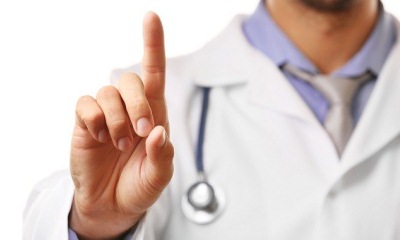 Equipment must be marked. There is our own equipment for the treatment of sanitary facilities, halls, wards and office premises.
Equipment must be marked. There is our own equipment for the treatment of sanitary facilities, halls, wards and office premises.- All cleaning equipment is stored in separate rooms, in special cabinets.
- Once cleaning is completed, all equipment should be washed, disinfected and dried.
- Products for reusable use are washed using disinfectant solutions.
- Cleaning workers must wear special clothing and be given rubber gloves, masks, caps, aprons, etc.
- Different equipment is provided for washing walls and floors.
- Only professional equipment can be used for cleaning in medical institutions.
- All cleaning devices must be made of materials that are not destroyed upon contact with disinfectant, alkaline and acidic solutions.
- Mechanized cleaning is possible only with the use of professional equipment with a reduced noise level. Vacuum cleaners and floor washing machines are used only when cleaning in public areas. They are not used in dressing rooms, operating rooms or wards for bedridden patients.
- Napkins for wiping surfaces should be made of materials that quickly absorb and release moisture, and are also not afraid of washing at a temperature of 95 degrees.
- Disinfection carried out for the purpose of prevention is carried out using steam generators.
Set of cleaning tools and accessories
The list of tools and devices for cleaning depends on the focus of the medical institution, its area, traffic flow and more.
The classic set looks like this:
- Surface cleaning and disinfection products. They can be liquid, paste-like, granular. All substances must dissolve well.It is possible to use only low-toxic compounds without a pungent odor or irritating effect on mucous membranes or skin.
- Sponges and rags.
- Buckets, containers for treating walls, mops, brushes, screeds, mops.
- Container for detergents and disinfectants.
- Garbage bags.
- For mechanized cleaning: vacuum cleaners, floor washing machines, steam generators.
- Cleaning trolleys.
If rags and buckets are used for daily activities, then more equipment is required for general cleaning. Its implementation can be simplified with the help of mechanized equipment.
Service
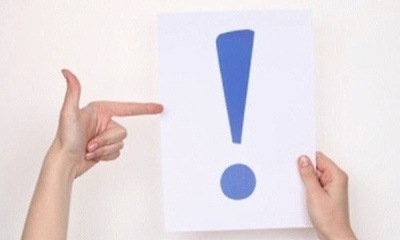 Equipment that has been used must be properly maintained.
Equipment that has been used must be properly maintained.
Three main stages:
- disinfection using specialized solutions;
- rinsing in clean water;
- drying.
Only after completing these procedures can it be sent for storage. It is recommended to use disposable wipes for cleaning. If this is not possible, they resort to using reusable products, with their obligatory washing.
Washing machines for this purpose are installed in those places where cleaning carts are collected. Squeegees, mop holders and brushes are treated after each use.
For washing, it is recommended to use liquid detergents, which are better washed out of textiles. Avoid using rinse aids.
Marking
Labeling of cleaning equipment in medical institutions is mandatory. It is necessary to prevent the spread of infection during cleaning.
Marking can be applied in the following way:
- If a medical institution uses equipment without color gradation, then marks are applied to it using indelible paint. Buckets, basins and other containers are marked on the outside.
- Reusable cloth napkins and rags are labeled by sewing small pieces of fabric in the desired color. Flannel napkins are not marked.
- Markings may be burned into brush handles.
- Buckets and brushes for cleaning in the toilet are marked with the letters “UB”, for other rooms - “For floors”, for the surfaces of sofas and seats - “For sofas”, for processing equipment - “For equipment”.
There is also a “Quad” classification that divides inventory by color:
- To process sanitary and utility rooms where garbage and dirty laundry are stored, red equipment is used. This indicates that it can only be used to service premises with significant bacterial contamination of surfaces.
- Green equipment is used to care for furniture, treat treatment tables, and dressing stations. This color indicates that the requirements for cleanliness at such facilities are extremely high.
- To treat rooms with low sanitary requirements, equipment marked in blue is used.
- The rest of the furniture, surfaces and products are washed with equipment marked in yellow.
Blue equipment is used for processing staff rooms, canteens, halls and other public areas.
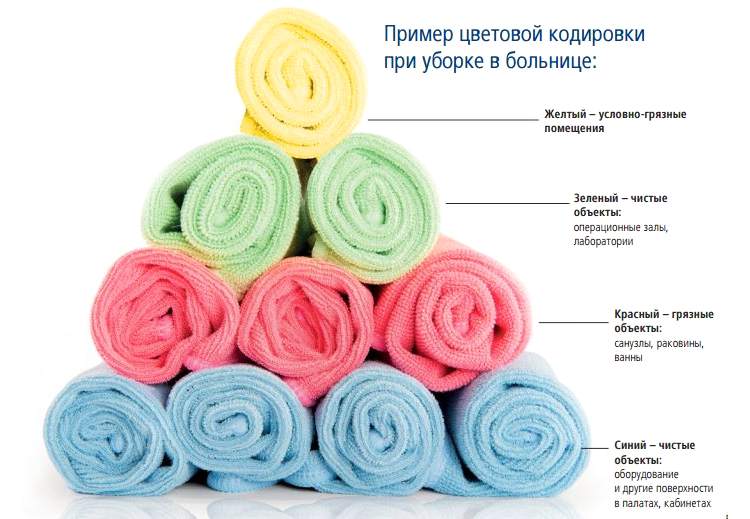
Storage rules
Storage rules cleaning equipment:
- Only equipment that has clear markings is sent for storage - if it has become illegible, it needs to be updated;
- It is prohibited to use equipment for other purposes;
- all cleaning equipment should be stored in special cabinets - mops and brushes are placed vertically, mounted on special holders;
- do not store brushes, buckets and rags that are used for cleaning in different rooms together;
- Only disinfected buckets, mops, etc. are put away for storage;
- you cannot leave inventory for storage anywhere other than a special room;
- disinfectants and detergents must be stored in the manufacturer’s packaging, with the label intact;
- sanitary rooms should be equipped with sinks, they should provide places for storing garbage and materials that have become unusable; it is desirable to have outlets with low taps for collecting water in buckets.
All working personnel must be familiarized with the rules for working with cleaning devices.
Conclusion
Cleaning equipment in medical institutions is subject to mandatory labeling. It must be stored in separate rooms, in special cabinets.
It needs to be properly cared for: disinfected, washed and dried. This will not only keep it in working condition longer, but also prevent the spread of dangerous diseases inside the hospital or clinic.
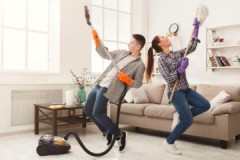
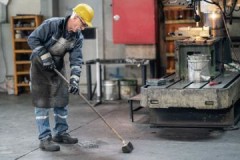
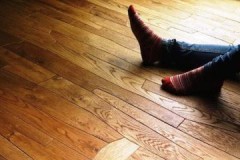
How are TWO mops regulated for cleaning in the treatment room used? Are they supposed to alternate or something else?